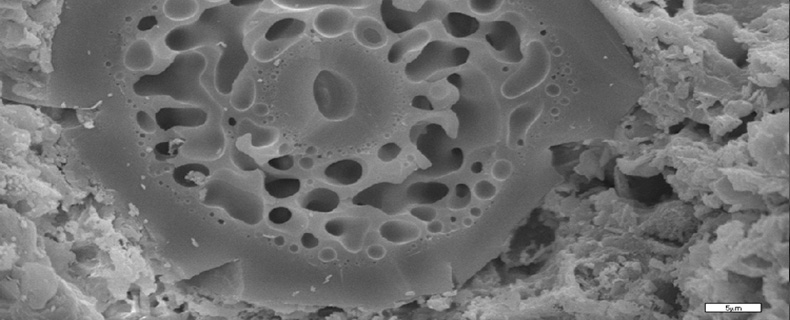| School |
Natural Sciences |
Academic Unit
|
Geology Department |
Level of Studies
|
Undergraduate |
Course Code
|
GEO_205 |
| Εξάμηνο σπουδών |
3ο |
Course Title
|
Earth Materials II: Crystal Chemistry and Mineral Systematics |
Independent Teaching Activities
|
Lectures, seminars and laboratory work |
Weekly Teaching Hours
|
2 (lect.) 3 (lab.) |
| Credits |
6 |
Course Type
|
Field of Science (Mineralogy) |
Prerequisite Courses
|
Typically, there are not prerequisite course. |
Language of Instruction & Examinations
|
Greek. Teaching may be however performed in English in case foreign students attend the course. |
Is the Course offered to Erasmus Students
|
Υes |
| Course Web-Page (URL) |
https://eclass.upatras.gr/courses/GEO311 |
Learning Outcomes
|
By the end of this course the student will be able to:
At the end of this course the student should be able to :
- Know essential facts, concepts, principles and theories of mineralogy.
- Recognise the minerals in thin sections.
- Understand the dependence of the physical and optical properties of minerals, as well as their crystal habit from their chemistry
At the end of the course the student will have further developed the following skills/competences
- Ability to demonstrate knowledge and understanding of essential facts,
concepts, principles and theories relating to mineralogy
- Ability to apply such knowledge and understanding to the solution of
problems of an unfamiliar nature.
- Ability to adopt and apply methodology to the solution of unfamiliar
problems.
- Study skills needed for continuing professional development.
- 5. Ability to interact with others on inter or multidisciplinary problems.
|
General Competences
|
Autonomous work, Teamwork, Work in an interdisciplinary environment, Production of new research ideas. |
| Syllabus |
- Formation of minerals in the Earth and the various environments
- Binary phase systems
- Classification of minerals
- Framework silicates Part I
- Framework silicates Part II
- Sheet silicates
- Chain silicates Part I
- Chain silicates Part II
- Nesosilicates
- Cyclosilicates
- Sorosilicates
- Some non-silicate minerals (carbonates)
- Some non-silicate minerals (oxides)
|
| Delivery |
Lectures and laboratory work face to face |
Use of Information & Communication Technology
|
Power Point, Laboratory exercises, examples |
Teaching Methods
|
| Activity |
Semester workload |
| Lectures (2 conduct hours per week x 13 weeks) |
2X13 = 26 |
| Laboratory work (3 conduct hours per week x 13 weeks) |
3X13 = 39 |
| Tutorial (1 conduct hour per week x 13 weeks) |
1X13 = 13 |
| Hours for private study of the student and preparation of home-works. |
72 |
| Total number of hours for the Course |
150 hours |
|
Student Performance Evaluation
|
Written final examination and problem solving. Exams on Petrographic Microscope. |
Attached Bibliography
|
- Δ. Παπούλης, Π. Λαμπροπούλου. Ορυκτολογία: Συστηματική Ταξινόμηση των Ορυκτών2016. 155σελ.
- Perkins, D., Mineralogy. Prentice-Hall, Inc. New Jersey. 484p, 1998.
- 3 Nesse, W.D.,. Introduction to Mineralogy. Oxford University Press. New York, Oxford, 442p. 2000.
- Dyar, M.D., Gunter, M.E., Tasa, D. Mineralogy and Optical Mineralogy. Mineralogical Society of America, Chantilly, VA. 708p, 2008.
- MacKenzie, W.S., Guilford, C., Atlas of the Rock-forming Minerals in Thin Section, Lonman, 98p, 1980.
Journals:
- American Mineralogist, Mineralogical Magazine, Mineralogy and Petrology, Reviews in Mineralogy and Petrology, Elements, Minerals.
|






























